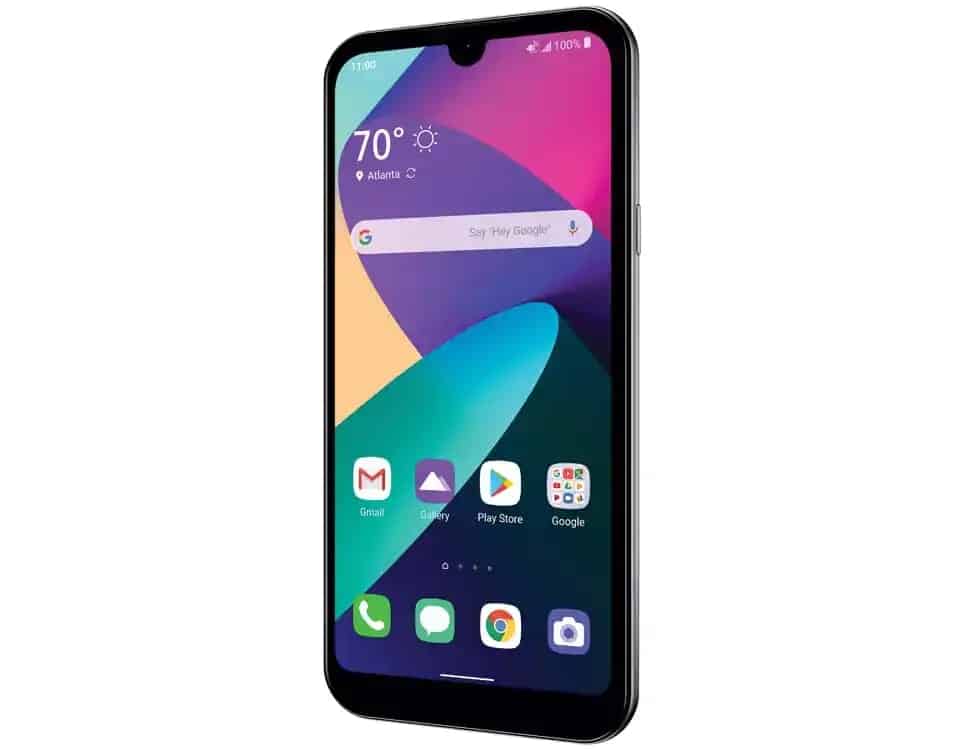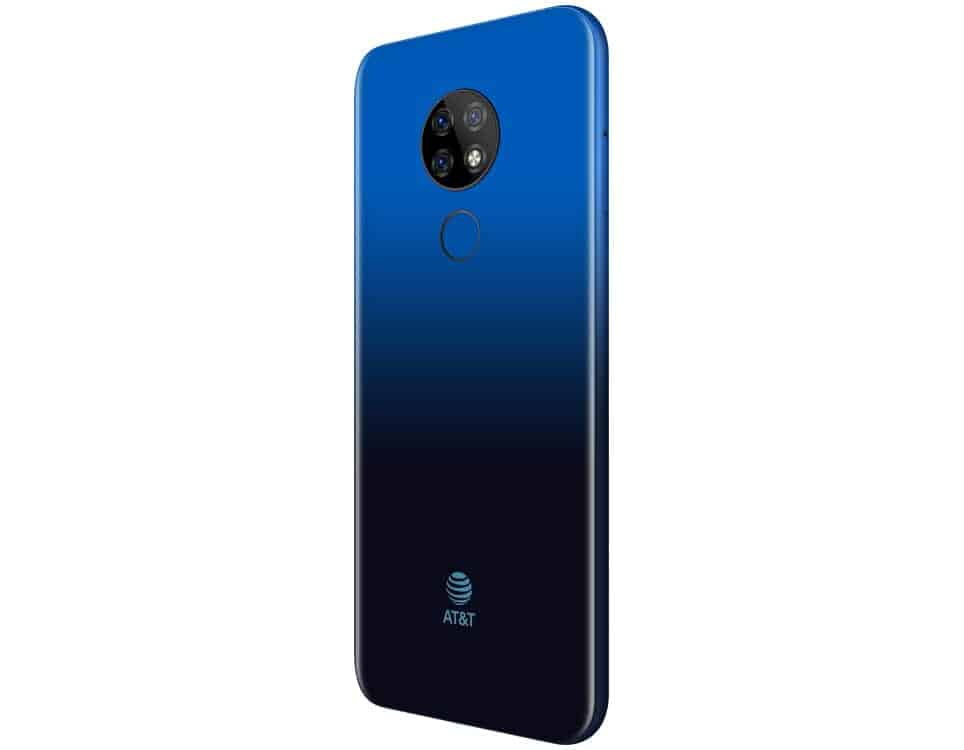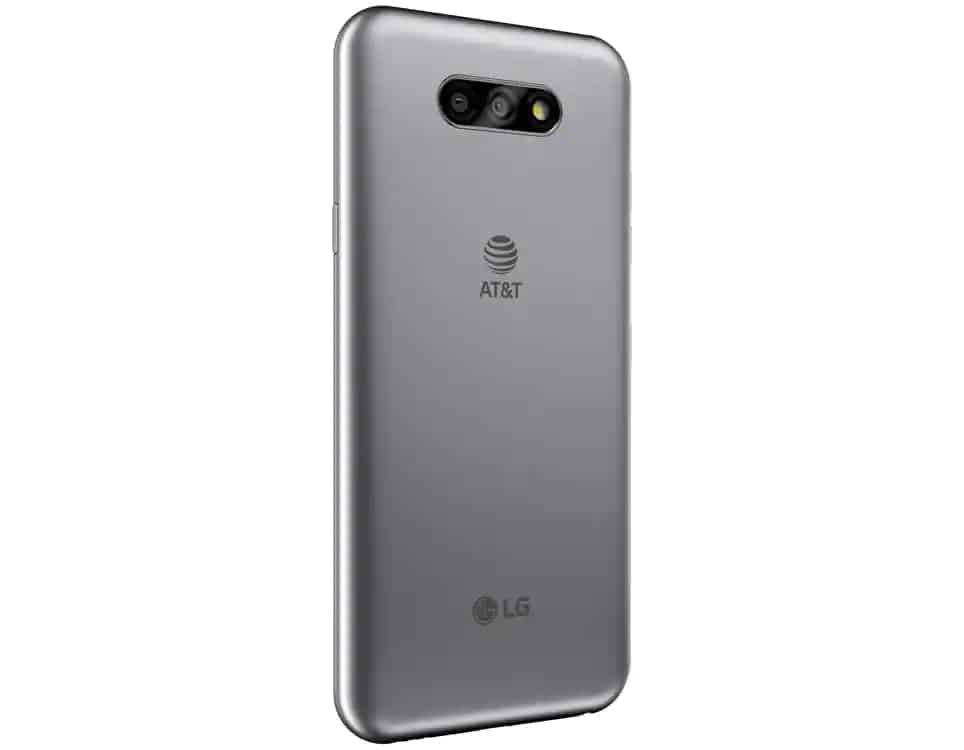The detailed specs comparison between AT&T Radiant Max and LG Phoenix 5 to find out which one is better. Find the best phone for you to buy.
More than ever, giant manufacturers like LG have to compete with a carrier branded phone. Between AT&T Radiant Max and LG Phoenix 5, it seems like LG gets a tough competition here.
AT&T Radiant Max comes with a triple camera, a feature that’s irresistible for photography-loving users. Will LG Phoenix have something to show in itself? We’re going to find out in this specs comparison between AT&T Radiant Max and LG Phoenix 5.
On our initial inspection, LG Phoenix 5 try to impress buyers with an Octa-core CPU, an HD screen, and a dual-camera. The price is also mind-bogglingly cheap.
Meanwhile, aside from its triple-camera setup, AT&T Radiant Max also comes out strong with a giant display at 6.5-inch. It also has a better battery. See more of our review of the two devices below.
Page Contents:
Main Differences
The screen size is the most noticeable difference between both devices upon the first gaze. LG Phoenix 5 comes with a 5.7-inch display. On the other hand, a giant 6.5-inch display adorns AT&T Radiant Max.
When you flip the phones to their back cover, another obvious difference is present. This time is the back camera, which AT&T Radiant Max has three while LG Phoenix 5 comes with only a dual-camera. There’s also a fingerprint sensor here.
Not as easily noticeable, other key differences include battery capacity (3,000mAh on LG Phoenix 5 vs 4,000mAh on AT&T Radiant Max.) Their internal storage capacity is also different.
Specs Comparison
Specs comparison between AT&T Radiant Max and LG Phoenix 5:
| AT&T Radiant Max | LG Phoenix 5 | |
|---|---|---|
| Weight | 175.2g | 145g |
| Dimensions | 170 x 76.2 x 8.9mm | 148 x 71 x 8.6mm |
| OS | Android 10 | Android 10 |
| Screen size | 6.5-inch | 5.7-inch |
| Resolution | 1560 x 720 | 1520 x 720 |
| CPU | 2GHz Octa-core | 2GHz Octa-core |
| RAM | 3GB | 2GB |
| Storage | 32GB | 16GB |
| Battery | 4,000mAh | 3,000mAh |
| Rear camera | 13MP + 5MP + 2MP | 13MP + 5MP |
| Front camera | 8MP | 5MP |
Read also:
Design
Design-wise, AT&T Radiant Max is clearly the longer phone here with a measurement of 170 x 76.2 x 8.9mm. LG Phoenix 5 measures at 148 x 71 x 8.6mm. This one is also significantly lighter, only weighing at 145g, compared to AT&T Radiant Max’s 175.2g.
On a quick glance, AT&T Radiant Max looks longer and slimmer. This is supported by the fact that it has thinner bezels than LG Phoenix 5. The design theme between both phones is similar overall, featuring an almost full-screen display with a notch on top.
Because they’re both entry-level phones, there’s no contest when it comes to body materials. Both phones utilize plastic back covers, with different choices of color. Black for AT&T Radiant Max and silver for LG Phoenix 5.
As a note, both back covers are glossy so you’d get the same smudge problem on each of them. The silver on LG Phoenix 5 fares better though in disguising marks and smudges.
Overall, if we have to choose one, we’d prefer AT&T Radiant Max. It is slimmer although technically bigger in size. The screen to body ratio is smaller, giving the impression of a bezel-less phone. The black finish makes the phone look more expensive than it looks.
Display
AT&T Radiant Max comes with a 6.5-inch display. Its resolution is 1560 x 720. The LG Phoenix 5 has a smaller screen size at 5.7-inch. However, its resolution is identical despite the size at 720p. That puts both phones into the HD+ category.
User experience on the two displays is roughly similar. We like the color accuracy but since they’re not a sophisticated screen, sharpness and detail seem a bit lacking. The color is vibrant enough for a budget phone. But they remained struggling when we used the phone outdoors on a bright sunny day.
However, one phone is better than the other. And it’s the AT&T Radiant Max. Its bezel-less design allows for a more immersive viewing experience. You are less distracted with the bezels when using this phone. Combined with the giant size, watching your favorite shows feels more amazing here.
Overall, in this area, AT&T Radiant Max is the clear winner. For day-to-day operations, the screen is also more spacious when splitting it into two apps.
But it’s not like LG Phoenix 5 doesn’t have an advantage. Since it’s smaller, it’s easier to operate especially with one hand. Some buyers may like it when comfort and ease-of-use are the priority.
Camera
The tripe-camera setup on AT&T Radiant Max consists of a 13MP standard, a 5MP wide-angle, and a 2MP macro camera. LG Phoenix 5 opts for a dual-camera consisting of 13MP and 5MP lenses. On the front, an 8MP lens adorns AT&T Radiant Max, versus a 5MP selfie camera on the other phone.
AT&T Radiant Max has more to offer with its triple-camera. The third lens makes it possible for users to take close-up macro pictures. Pictures resolutions are not high, but it’s enough to capture the detail of your food, for example.
The main and second camera between both phones shares similar specs. When we used them to take pictures, the quality was almost on par between the two. Images come out the best as long as the lighting is bright. For low-light situations, both phones still struggle.
LG Phoenix 5 is better when it comes to the camera app. Post-processing is the phone’s strong suit. The app also has more options from the essential such as the Pro modes, or merely gimmicky features like filters.
In the selfies department, AT&T Radiant Max packs a better camera with its 8MP shooter. With only a 5MP selfie camera, once again LG Phoenix 5 is lagging behind. For photography fans, AT&T Radiant Max proves to be the more irresistible choice.
Storage
AT&T Radiant Max allows users to store files on its 32GB of internal storage. It is bigger than LG Phoenix 5 with its 16GB memory. The SD card option is also better with AT&T Radiant Max, offering 128 GB as opposed to 32GB on LG Phoenix 5.
We can be sure AT&T Radiant Max is the ultimate choice if we consider storage alone. The setup on LG Phoenix is disappointing. Not only that 16GB will run out fast, but the SD card capacity allowed is also not much.
Meanwhile, today’s phones need a lot of space to store data. We feel that LG Phoenix 5 won’t be able to keep up with the demand for ample memory space.
Performance
AT&T Radiant Max and LG Phoenix 5 share similar 2GHz Octa-core, MediaTek Helio P22 for their processor choice. There’s a difference for the RAM, though. AT&T Radiant Max employs 3GB RAM while the other has only 2GB of RAM.
It’s worth noting that MediaTek Helio P22 is an entry-level processor. So it’s not as speedy as more sophisticated CPUs in more expensive models. A decent processor for your daily needs, however, things can get a bit tricky when you try to perform demanding tasks.
All in all, we feel like, in the bigger picture, the performance level is pretty much the same between the two phones. They have the same CPU and GPU.
This is why more RAM can help to improve performance. Again, AT&T Radiant Max is one step ahead here. Compared to LG Phoenix, we noticed the former is less laggy at times.
The RAM setup results in a better performance in AT&T Radiant Max. The extra 2GB means the phone can process tasks faster. This is especially applied for multitasking. AT&T Radiant Max is able to handle more apps at once compared to LG Phoenix 5.
Both phones use Android 10. AT&T Radiant Max comes with a vanilla version without a lot of modification. Meanwhile, LG uses its custom UI on LG Phoenix 5.
Although lighter, we find AT&T Radiant Max interface to be ‘boring.’ It’s no denying that LG Phoenix 5 interface looks more beautiful and fun to interact with. You’ll also get more customization options in this phone such as themes and icons. You don’t have to install a third-party app.
The availability of custom apps is also a strength of LG Phoenix 5. You will get LG note apps, custom security features, and other utility features. It’s something that’s lacking with AT&T Radiant Max.
However, AT&T Radiant Max wins big when it comes to sensors. It has a fingerprint reader, which is almost a must for today’s phones. The feature allows users more security than typical passwords. Even better, it’s also quick when unlocking the phone. AT&T Radiant Max does make a tough competition for LG Phoenix 5.
Other than that, both phones share many common sensors such as Accelerometer and Ambient Light. They also support hearing aid devices.
Connectivity
AT&T Radiant Max and LG Phoenix 5 both are 4G-capable phones. They also support other network types such as Wi-Fi and Bluetooth. Like any other modern phone, GPS is also present here.
Connectivity is probably the only area where the two phones are identical. We didn’t notice any huge difference in call quality. The same thing also applies when browsing the internet. Providing they use a similar carrier, each is barely distinguishable.
Both phones also employ the latest version of Bluetooth, Bluetooth V.5. The only thing that separates the two is the USB port. AT&T Radiant Max uses a USB Type-C one while LG Phoenix 5 sticks to the older MicroUSB.
Battery
AT&T Radiant Max is strapped with a 4,000mAh battery. On the other hand, LG Phoenix 5 users will have to be content with a 3,000mAh battery. You might think the AT&T Radiant Max is better.
For battery performance, it’s important to take note that AT&T Radiant Max also has a larger screen. It requires more battery to run. So overall, the performance is similar to LG Phoenix 5.
It’s the charging time that’s different. Especially how faster AT&T Radiant Max is to charge the battery. The secret is the USB Type-C port which LG Phoenix 5 doesn’t have. In this case, AT&T Radiant Max is winning again.
Which is better: AT&T Radiant Max or LG Phoenix 5?
We feel like AT&T Radiant Max is more of a mid-range phone than an entry-level one like the LG Phoenix 5. It beats LG Phoenix 5 in many areas that it almost feels unfair to compare them. AT&T Radiant Max has more cameras, more RAM, and a larger display. This spec comparison between AT&T Radiant Max and LG Phoenix 5 has shown this imbalance of features.
On the other hand, LG Phoenix 5 advantages come from the fact it’s an LG phone. It has a better UI from LG along with custom apps.
The last thing we need to compare is the price. LG Phoenix 5 is sold at $50. It’s very cheap, but Radiant Max too at $65. There’s only a small difference and you will get better specs. If we have to choose one, we’d go for AT&T Radiant Max. Especially when on discounts, AT&T sell it at around $50.
AT&T Radiant Max Pros
- Triple-camera
- Larger display
- More RAM
- A fingerprint sensor
LG Phoenix 5 Pros
- LG custom UI and apps
- More ergonomic body due to the smaller size
- Cheaper





